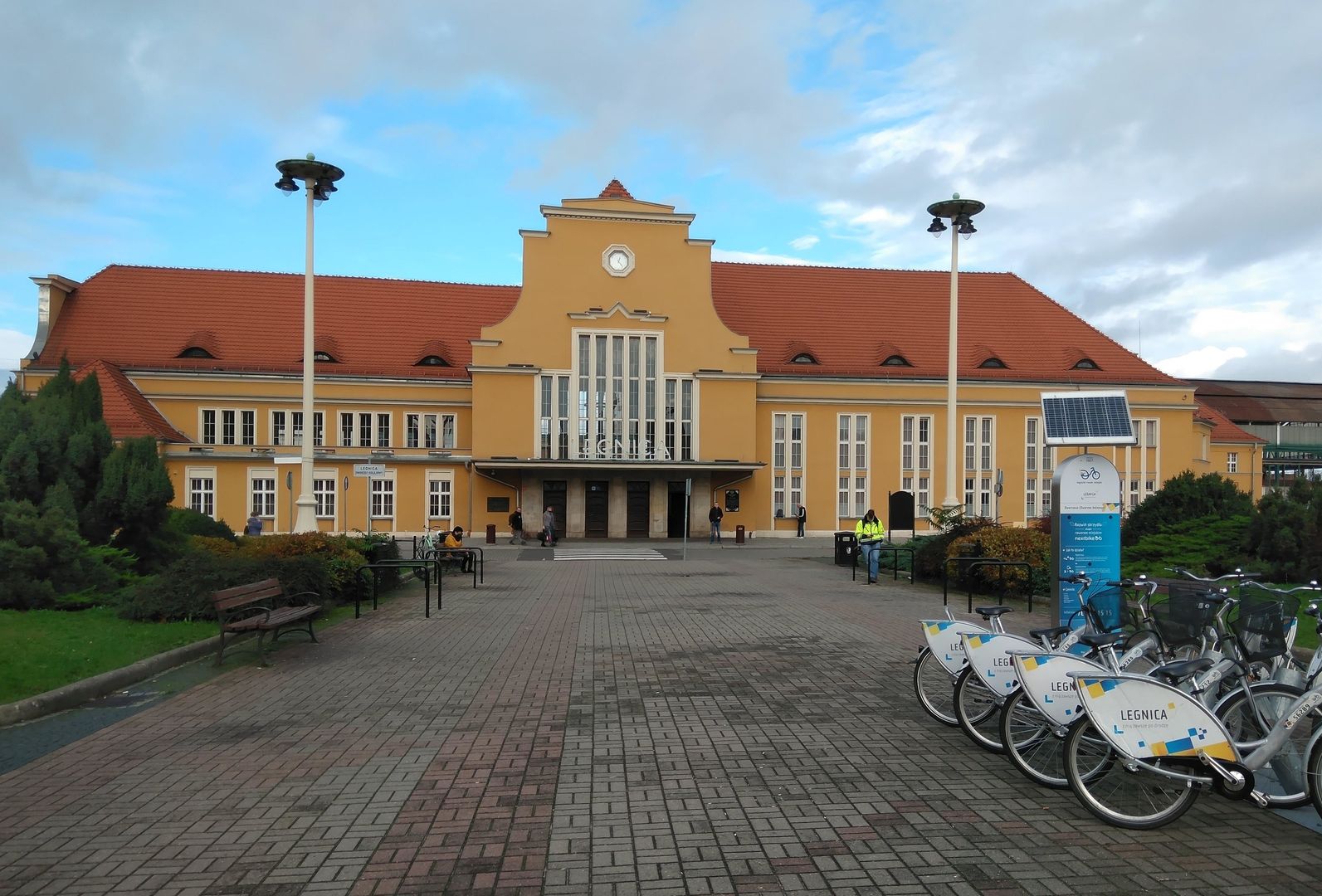Legnica
6.89

Overview
The Legnica railway station, opened on October 18, 1844, is a key transport hub located on the Wrocław–Gubinek line and near routes to Katowice, Jerzmanice-Zdrój, and Rudna. Designed by L. Mattheus, the current modernist structure was completed between 1927 and 1929 and officially opened on December 7, 1929. It features expressionist architecture with a steel-framed platform hall, reminiscent of Hamburg Hauptbahnhof. The building was added to the register of historic monuments in 1987. Major renovations took place in 2012–2013 and 2019, with further upgrades planned, including elevator installations and platform modernization.
Legnica played a significant role in the development of railways in Lower Silesia as early as the 1830s, connecting Wrocław with Berlin. Over the years, the station witnessed the expansion of the rail network, including the opening of lines to Strzegom in 1856 and to Złotoryja and Jerzmanice-Zdrój. During World War II, the station was used by the Soviet army, and after the war, it was taken over by Polish State Railways. It has also been the site of historic events, such as the unveiling of a commemorative plaque in 1946.
Today, the station handles both passenger and freight traffic and features extensive infrastructure, including a locomotive depot and a water tower. Thanks to its unique architecture and rich history, the Legnica station is not only a vital transport link but also a significant cultural landmark of Lower Silesia.
Location
Country
2025 Wizytor | All Rights Reserved